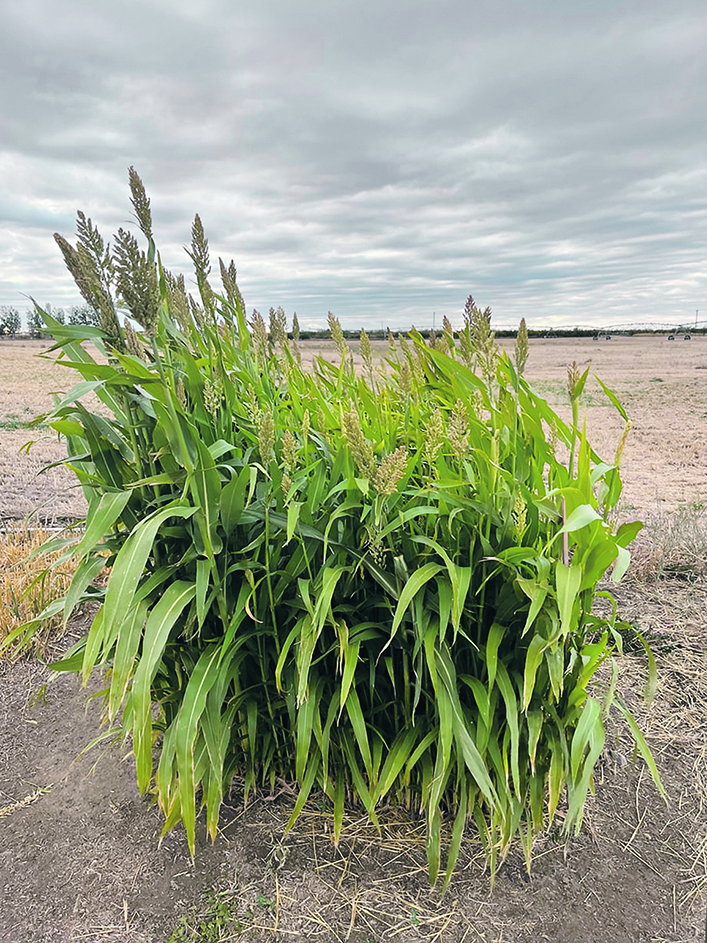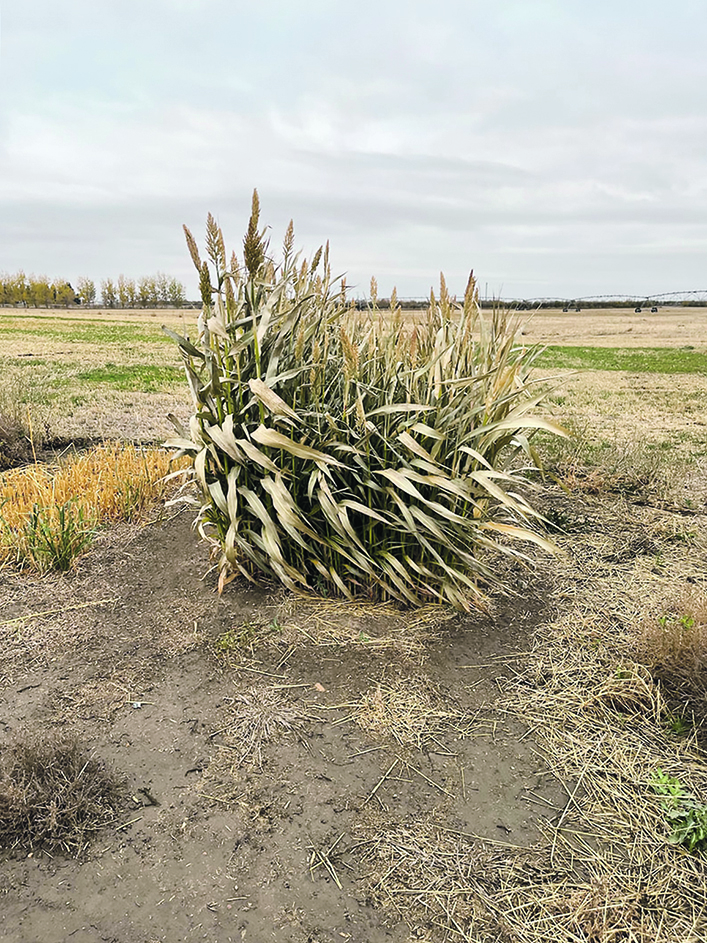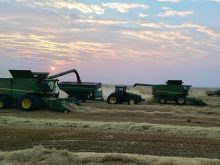New sorghum varieties can be kept in the field for fall or swath grazing, as well as used for silage
Double-cropping strategies can take different forms.
This year, Stamp Seeds of Enchant, Alta., conducted field trials in which the company seeded oats and forage sorghum this spring, following a hybrid fall rye harvest.
Greg Stamp, Stamp Seed sales manager, said the test came after the fall rye was harvested with both sorghum and oats having benefits.
“We took off the rye quite early — at boot stage — to see what you could grow afterwards. The season was long, so the oats were mature before we expected and the sorghum got pretty good tonnage,” said Stamp.
He said sorghum doesn’t have the best reputation because certain varieties didn’t hold up well following a frost.
“They would kind of melt,” said Stamp of certain sorghum varieties. “Whereas this variety is meant to not melt when it gets frost.”
The first frost event occurred in mid-October with the sorghum keeping its mass and staying green. The results demonstrated the crop could be kept in the field for fall or swath grazing, as well as used for silage.
In the sorghum trial, Stamp said depending on the risk tolerance of the grower, rye could have been left in longer to maximize yields with the hope an early frost wouldn’t hit the sorghum.
Because of the lack of early frosts in recent years in southern Alberta, Stamp said a mid-June harvest or at the milk stage of the fall rye might have worked better.

“That being said, we had a really long season and we haven’t had an early frost in the past three, four years but we are bound to get a crazy year,” he said. “And that’s not going to do much for your double cropping so there is definitely some risk.”
The field tests were conducted on irrigated land and while the sorghum wasn’t heavily watered, Stamp said it would not perform well on dryland.
Oats also performed well, came off early and the crop can be a good fit for producers looking to seed and harvest quickly.
But producers looking to double crop must avoid two pitfalls, said Stamp.
“Not planning ahead, that’s probably the biggest mistake,” he said.
Farmers looking for next day delivery of sorghum seed may be hard-pressed to find that type of access.
Stamp said having conversations with your seed supplier ahead of time is the best and easiest way to avoid that problem.

“Anything that is not a firm decision, at least talking to someone and asking what’s my options, talk through the project and when should I be doing a glyphosate prior to planting or should I be doing any tillage prior to planting this between my fall rye and oats or my sorghum,” Stamp said. “Just have that conversation a couple of weeks ahead of when you may be doing that would be critical.”
The other potential issue is field management.
“Sometimes it just makes sense to go through and do a tillage pass to make sure you have everything killed off from that first crop so that it doesn’t follow you into your next crop,” he said.
Even if it takes an extra day, having the seed bed right will help with double-cropping strategies, Stamp said.
As far as the cover crop goes in a double-cropping strategy, the earlier you can get a fall variety in, the earlier you can harvest a bigger, faster crop and improve silage timing.
Full results of the forage, silage crop trials can be found on the blog page of the Stamp Seeds website.
















